EBOOK
Beauty Ecommerce
Published: Apr 3, 2018
What you’ll get from this book
In a market predicted to be worth $750 billion globally by 2024, beauty brands and retailers are in a highly competitive and rapidly-changing environment that can seem contradictory.
Market-leading multi-brand retailers such as Sephora and Ulta in the US, and Feel Unique and Cult Beauty in the UK – like all retailers – face a growing threat from Amazon. Yet at the same time, in the shadow of these giants, upstart direct-to-consumer (aka vertical eCommerce) brands like Glossier have been able to cut through the noise by cutting out the middleman, empowered to reach their target audiences through channels including social media.
In beauty, the customer experience is where the sale is won or lost, so while these two different business models face slightly different competitive challenges, ultimately both are seeking to engage the same consumers. And all must contend with the challenge of bringing the experience of shopping for cosmetics to life online. But how?
The answers lies in mapping.
Gartner has predicted that by 2018, 30% of large organizations will have improved their customer experience by integrating customer journey maps with business process models. Creating a customer journey map can be a complex process, but a great place to start is the onsite experience. In this beauty ecommerce guide we’ll show you how to makeover your customer journey optimization process, across the three categories that have seen the most disruption:
- Discovery: you know where your traffic has come from – whether it’s search, social, display or email – so it makes sense to map out where it might go next. In this section, we’ll take a look at how beauty brands are optimising the journey at this first touchpoint.
- Purchase: as consumers become more comfortable with buying beauty online, the beauty sales assistant is being replaced with onsite customer experience. Here we’ll cover what beauty brands can do to aid customers in their decision-making process to drive conversions.
- Loyalty: arguably the largest obstacle for online brands, this section will examine what the rise of disruptive models, like subscription boxes, tells us, and what can be learned from the big players like Amazon and Sephora.
Discovery
How do your visitors arrive onsite? For beauty brands, the discovery stage of the customer journey is one that’s seen the greatest disruption, evidenced by the rise of subscription boxes, aimed at the ‘beauty indifferent’ and, at the other end of the spectrum, the beauty-obsessed who have racked up 88 billion views of beauty related content on YouTube.

Search and social are the two digital channels that brands have focused on to reach these groups, but there is a big opportunity to better align these digital discovery channels with the onsite experience to ensure that the customer journey continues.
The search arms race
According to L2 Gartner, beauty brands are spending more on SEM to maintain visibility in 2018. While the majority are focusing on branded terms, with share of paid search increasing by 10%, there is also a growth in bidding on unbranded terms in an attempt to attract more visitors at the discovery stage of their journey.
A good example of this is the fact that product-related terms such as ‘best foundation’ account for 1 in 4 paid keywords driving traffic to cosmetics brand websites, as marketers feed new customers at the top of the conversion funnel.
As well as competition between the top brands, Amazon has been spending aggressively, accounting for over 20% of paid search results for beauty search terms in 2017. So with competition driving acquisition budgets ever higher, how can beauty ecommerce retailers ensure they’re making the most of their acquisition spend?
Give Google Shopping visitors on mobile a great experience
With top European beauty retailers reporting that 50% of online business comes from mobile, it’s essential that mobile search is optimized. Google Shopping searches are the largest single source of traffic to retail sites on mobile, and 75% of searches that arrive this way land on product pages, despite being broader category searches.
So for example, a user has searched for ‘red nail polish’ and instead of being served the range of red polish available, they land on a single product. Particularly telling is that over three quarters of revenue generated from Google Shopping customers was found to have come from users who navigated from the product page to the category page.
The solution here is to assist users to navigate upwards to the category by making it very clear how mobile users can discover other, similar items. For example, MAC Cosmetics dominates the ‘best red lipstick’ keyword, and has an easy-to-navigate colour palette accessible from product pages:
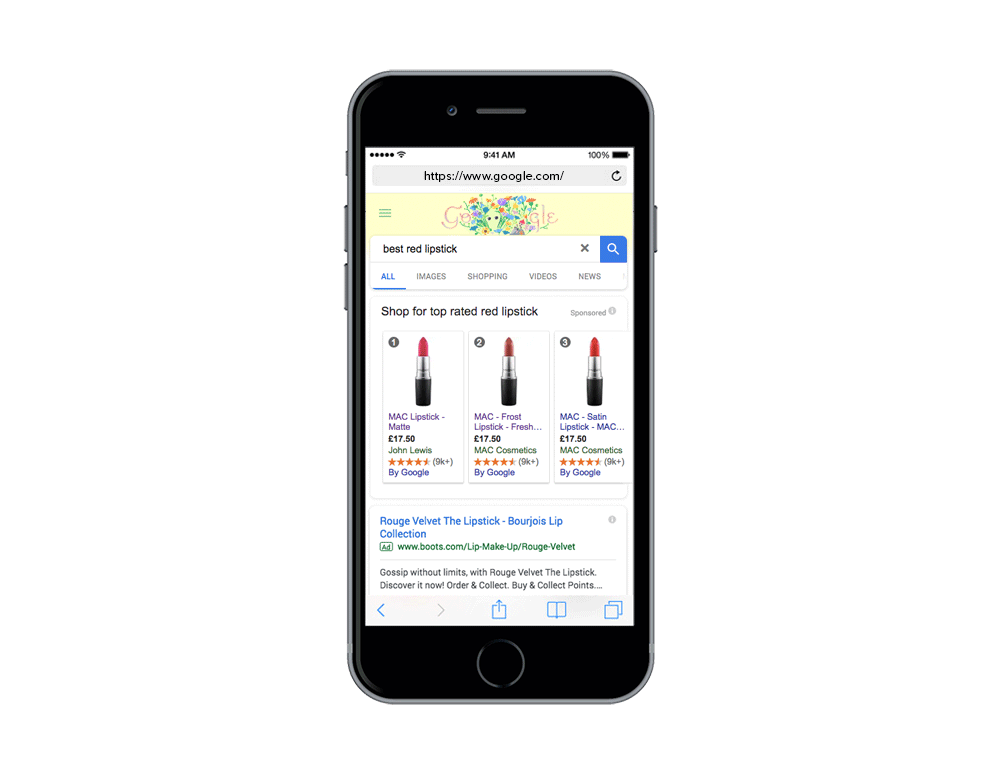
Like MAC, beauty retailers need to recognize those visitors landing from particular channels and provide them with a relevant next action to aid the discovery journey, this can be accomplished quickly and easily with a subtle notification format.
Convert AdWords visitors into loyal customers
As mentioned, retailers and brands are increasingly bidding on unbranded terms to attract new customers. The problem with this approach is that once customers arrive onsite, it’s hard to make an impact that differentiates the brand. This is just as relevant to both smaller, direct-to-consumer retailers and online stores selling a range of different beauty products.
First up, ensure the landing page has engaging, contextually-relevant content that brings your USPs to life. Match it with your target keywords – for example, if you’ve won clicks via a long-tail keyword around makeup tutorials, direct customers to exactly the right content and nudge them to explore and engage with your site.
Don’t underestimate the power of your brand in convincing consumers to convert. While you could choose to tempt abandoning customers to buy with discounts, a more cost-effective way to engage them is to amplify your USPs instead. Skincare brand skyn ICELAND relied on e-commerce AB testing these approaches to see what would resonate better with abandoning visitors. The tests revealed that the USP amplification messaging performed better than a discount message, creating a +28.87% conversion rate uplift.
The platform effect
Gone are the days where celebrity endorsement was the key means of promoting makeup brands – in 2015, only 7% of women reported that they were interested in seeing celebrity makeup brand ambassadors – instead, they’re looking to social platforms as the dominant channel through which they interact with beauty brands. 70% of Gen Z buy via social media, and UK beauty buyers check Instagram an average of 21 times per day, presenting a huge opportunity for brands to reach this young demographic. And even if they’re not buying via social, beauty customers are certainly using social as inspiration for what to buy later, so it’s a key touchpoint in the customer journey.
As major brands’ dominance has been challenged by younger, digital-first companies, smaller independent beauty brands have been able to cut through by using innovative social strategies. As outlined by L2’s beauty director in this summary of how Rihanna’s new beauty brand Fenty recently launched to great success, influencer partnerships with a grounding in a great product is the key means for new brands to reach Millennial and Gen Z audiences, who value individuality, authenticity and inclusivity. Many traditional brands are left playing catch-up as they reorientate their marketing strategies around social.
What can be learned and applied by beauty brands looking to improve their customer journey?
Use visual content to replicate the physical experience of testing makeup
Shopping for beauty products has traditionally been an experiential process, and it’s difficult to show how products work online.
To solve this problem, retailers are now investing heavily in visual and interactive content to show the effectiveness of their products online. For example, Smashbox’s Virtual Try On Studio, or L’Oreal’s Makeup Genius app with in-built virtual ‘mirror’, which both allow users to test products and looks on their own faces.
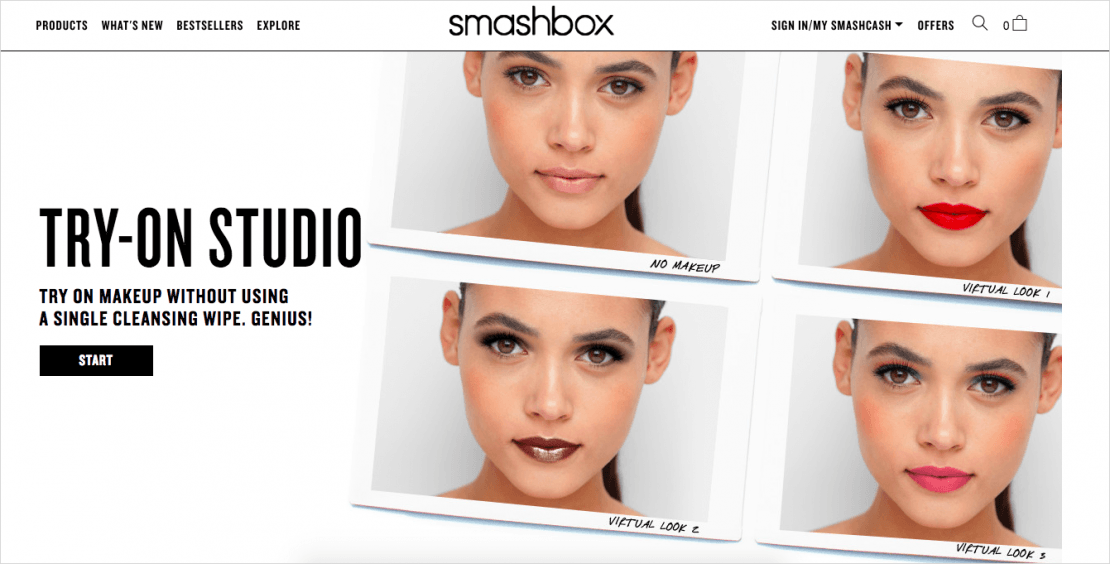
Leverage user-generated content and reviews to create social proof
Today’s consumers have more choice, resources and knowledge than ever. With ubiquitous tutorials and reviews, buyers know exactly what they want. Millennials are 44% more likely to trust experts but 247% more likely to trust blogs and social sites than non-Millennials – so marketing tactics need to evolve to match these preferences.
Talia Shani, Director of Marketing at Yotpo explains why:
“Beauty shoppers trust each other more than they trust beauty brands, hence the huge growth and engagement of communities like Makeup Alley and Reddit’s Skincare Addiction. That’s why, if you want beauty buyers to take you seriously, you need to leverage user-generated content (like customer photos, photos curated off Instagram and product reviews) all over your site. Beauty shoppers who engage with UGC convert at a 213% higher rate”
A great example of this is Green People, one of the UK’s most-loved natural skincare and make- up brands. The 20-year-old company embraces the wisdom of its customers by featuring their photos and reviews all over their site. From a shoppable gallery of customer images on the homepage to detailed reviews (as well as photos from real customers who can show the results of using the actual product) on its product pages.
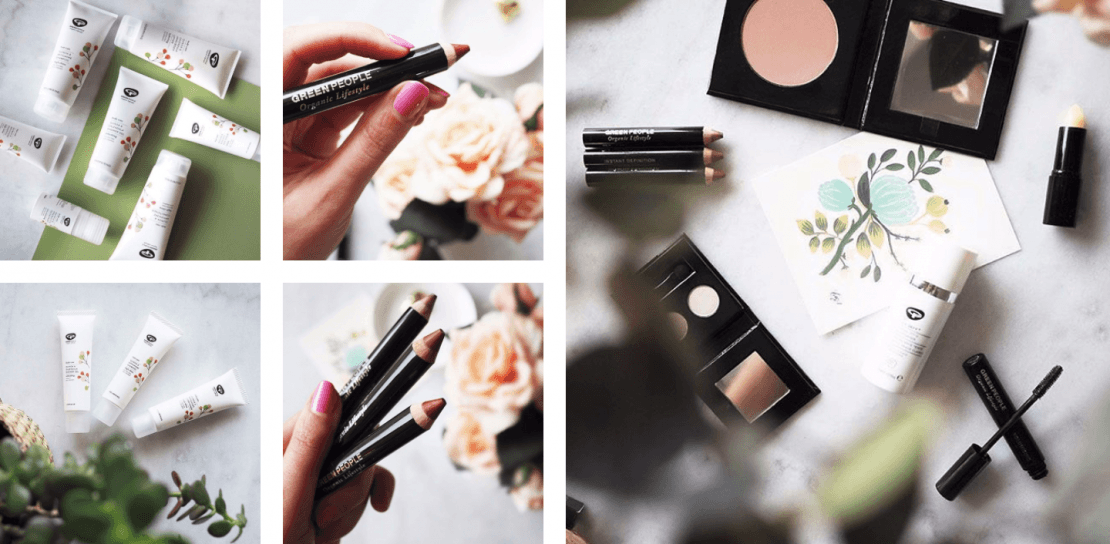
L’Oreal-owned brand NYX married UGC with in-store behavioral insight to encourage customers use their phones in-store to scan product barcodes. This allowed shoppers to see product descriptions and view how other consumers had used their products under its hashtag via Instagram. Given that 80% of shoppers will use their phone inside a shop to compare prices and product reviews, this is a smart and effective way of harnessing user behavior to improve conversions both online and in person.

However, you don’t have to design a bespoke experience to create social proof. This can easily be done onsite through overlays and prompts that communicate with the customer. For example, footwear retailer Butterfly Twists used subtle onsite messaging to indicate the number of visitors who had viewed a product in the previous 24 hours, resulting in an 11.1 per cent conversion rate uplift.
This approach can be applied easily by beauty brands to aid the decision-making process. You might, for example, show: remaining stock levels, how many others have added an item to their cart to drive sales of limited edition or seasonal products, or highlight that an item is a best seller to support a new product launch.
These tactics are invaluable for new brands launching in a competitive market, as Oliver Bridge, founder of shaving subscription company Cornerstone explains:
“Most men who shave have used the Gillette razor for five, 10, 30 years. To convince them to swap to a brand that they may have only just heard of is quite tricky. The way we got around that is first, by providing as much information on the product to explain how it’s made, what makes it different. Then using tactics like social proof to show positive reviews and how many other customers like the products is a great way to reassure people. Then, we put our money where our mouth is: there’s a one-year return guarantee on our products, so if you don’t like it, you can send it back.”
Purchase
Once you’ve enticed a user to your website via paid or organic search, social or referral, it’s now time to optimize this part of the customer journey in order to convert them.
Differentiating the customer experience
With nearly half of US women having purchased a beauty product on Amazon in the year to January 2018, plus specialty retailers like Sephora and traditional department stores all vying for clicks, competition to sell the same products to the same customers is fierce. The only way to differentiate your customer journey is to optimize the onsite experience, so here are some ways to do just that.
Get smart with sampling
Sampling is a tried and true method of beauty marketing – but traditionally relies on face-to-face interaction.
Not anymore. By highlighting special offers on product bundles, or offering free samples, brands can help consumers discover products they might not have previously considered, continuing to aid discovery during the buying phase whilst giving retailers an opportunity to boost average order values.
Multi-brand beauty retailer Feelunique takes sampling to the next level, offering a pick n’ mix service that allows users to select samples and redeem the cost of shipping against a purchase, so they can try before they buy. This builds trust and encourages brand exploration, and is just part of how Feel Unique is seeking to become the ‘natural destination for all your beauty products’ according to Joel Palix, CEO.
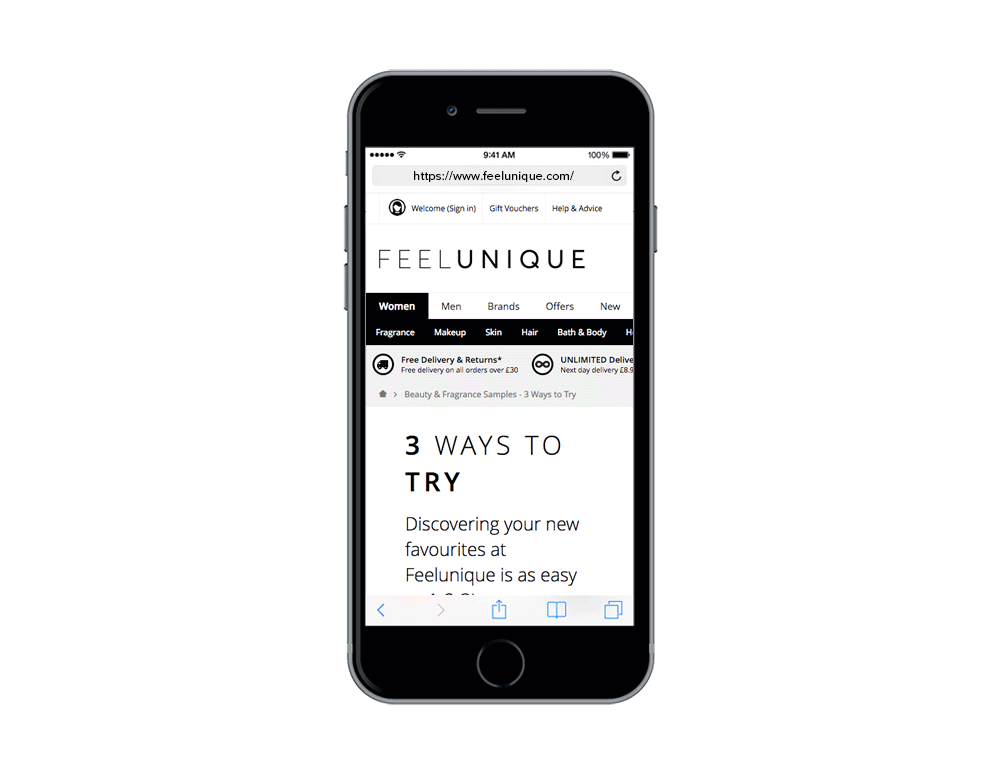
Kiehl’s is a multichannel brand that has sought to bring its generous sample policy to life online, cleverly tying this in with order threshold to increase average spend. Visitors with a cart value between €75 and €89 were targeted with a corner notification during their journey, with a campaign offering 2 XXL free samples and three sachets if they spent over €90. By mirroring the in-store experience of being offered samples by an advisor, Kiehl’s achieve an uplift in conversion rate of 73.8%, and increased average order value by 4.2%.
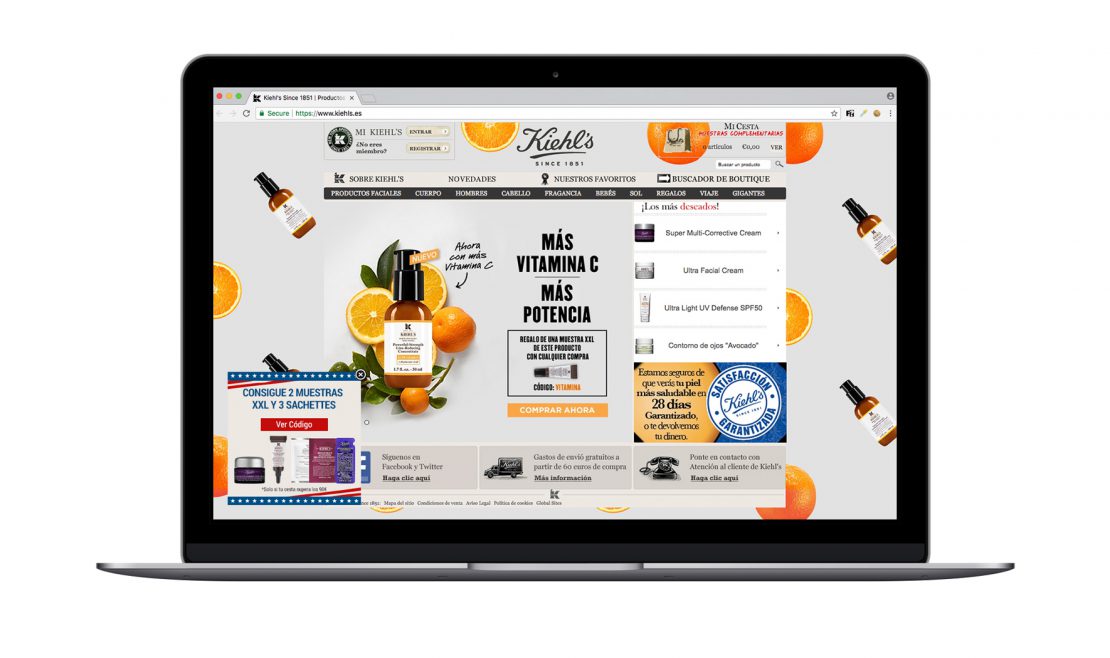
Samples can also be used as an incentive to entice customers who aren’t quite ready to buy. Nail polish brand Essie used a floating button format to offer free samples if you sign up for the mailing list. (More here on how to effectively use incentives to capture email sign-ups)
Learn from the sales assistants
In the real world, conversion, cross-selling and upselling are traditionally done by the beauty sales assistant. But as consumers grow more connected, this role is coming under threat. According to Mintel’s Beauty and Personal Care trends report for 2018, 67% of US beauty buyers aged 18-22 now prefer to search for product information in-store on their mobile device than ask a sales representative.
This preference for finding information online means that beauty websites and social platforms are in the perfect position to help customers discover products they might like, whether they’re in-store on their mobile, or browsing from home. But there are still a few lessons that can be learned from the sales assistant.
Brands need to deploy the right messages at the right time to come across as authentic and providing value, just like a good sales assistant. One way to do this is by presenting targeted messaging based on user behavior. For example, when shoppers on the skyn Iceland website have the Hydro Cool Firming Eye Gel in their basket, a subtle notification suggesting another product appears:
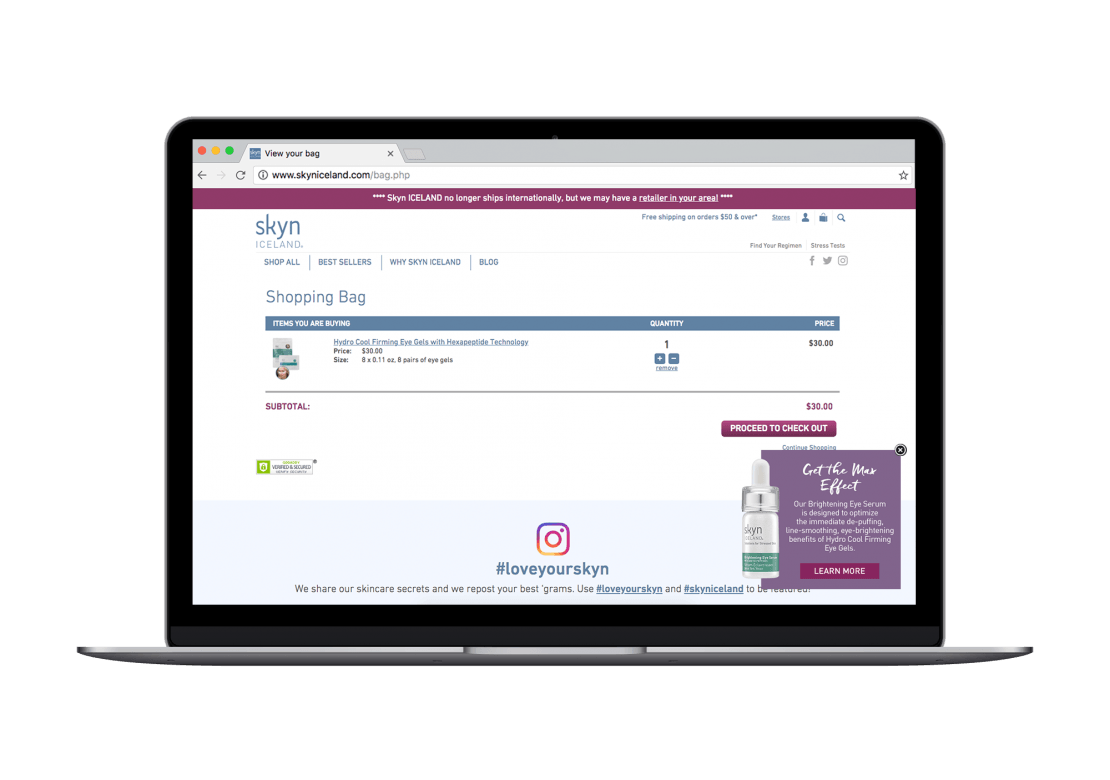
By simply suggesting a relevant, complementary product at the right point in the customer journey, the brand achieved a +23.1% conversion rate uplift.
Loyalty
With acquisition costs rising, retention is where smaller brands can stake a claim. This can be done with social engagement, influencer marketing, onsite and email remarketing and user-generated content. And it’s worth it – in a market with a high repurchase rate, and the growing interest in indie brands, retailers with a small but loyal following can cut through.
What can be learned from the bigger players like Amazon and Sephora, and at the other end, the market disruptors like subscription boxes?
Launching a loyalty scheme
According to Harvard Business Review, it costs anywhere between 5 and 25 times as much to market to new customers as it does to market to existing customers. For beauty products – which have a huge potential for repeat purchases and customer loyalty – marketers should consider campaigns that focus on this, such as loyalty schemes.
Define what loyalty looks like
Launching a loyalty scheme takes consideration and resources. How do you encourage visitors to join your scheme? And what constitutes success? What perks are you offering to loyal customers?
Brands need to carefully craft loyalty schemes to see success. While points-based systems are among the most common, they can often fall victim to over-complication. The methodology behind a loyalty scheme i.e. the link between points and rewards should be obvious and tangible for consumers.
Sephora is one brand that uses the points-based system effectively, offering subscribers the inside scoop, along with free shipping for purchases over a certain number of points, and VIP status after spending $350. (Read a case study here)

Amazon is another example to look at here – the Prime model, whereby users pay an upfront fee for unlimited free shipping and other perks, is already being experimented with by beauty retailers such as Feel Unique, the first European pure-play beauty ecommerce brand to launch a subscription delivery model with Unlimited:

skyn Iceland recently launched a loyalty program, but recognized the importance of tailoring the messaging around this to different consumers to ensure the best result. Using overlays, the brand was able to communicate the benefits to new and returning customers in different ways:
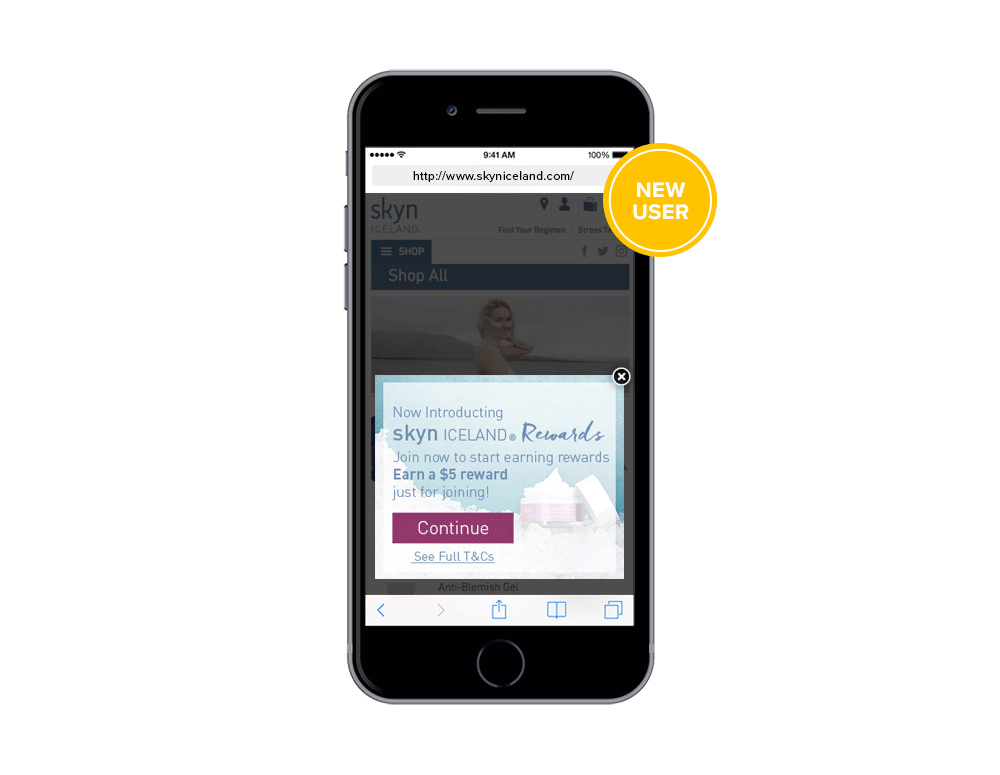
The most important thing is to think about what loyalty looks like for your brand – you don’t even necessarily have to launch a specific campaign to create loyalty. Customer-centric brands such as The Ordinary and Glossier have taken their brand values of radical transparency, and translated them into loyalty by applying them to every aspect of their businesses, from social media to reviews to crowd-sourced products.
For Cornerstone, this type of approach is a key driver of loyalty, as founder Oliver Bridge reveals:
“Loyalty for us comes down to making great products and having great service. We’re effectively the male version of brands like Glossier and The Ordinary. We started out in 2015, raising a million pounds on crowdfunding to get the business going. Every product we’ve launched since then has been either a suggestion from a customer or a suggestion that we’ve come up with. Then, we’ve tested it with hundreds of customers before launch. We won’t launch a product until we have at least 90% of our customers saying, ‘I love it. I would swap my current product to this.’
The beauty box boom
Subscription boxes in all sectors are exploding, with Forbes having reported 800% growth from 2014 to 2017. Beauty boxes account for a whopping 35% of subscriptions. This model poses a threat to traditional retailers, particularly as it encourages continuous discovery and experimentation over loyalty. This means that non-subscription beauty ecommerce retailers must evolve in order to learn from and compete with subscription brands.
Get personal
As Gen Z and Millennial consumers prioritize individuality, preferences have shifted from ‘what are the best products?’ to ‘what are the best products for me?’. McKinsey has predicted that marketing will need continue to become more personal over time. This means that beauty marketers will need to be ahead of the curve in terms of personalization, particularly as the subscription model is primed to cater to these needs, with companies like Birchbox offering a curated experience.
Brands should look to collect data on consumer preferences, and segment website visitors to give them a more tailored experience. This can be qualitative (e.g. using a quiz) or quantitative (data points, like past purchases). This way, marketing activity can be based on the individual’s preferences, and technology can be used not just to collect the data, but also to use it to the benefit of customers.
For example, Eyeko, the eye make-up specialist has taken this to the next level, bringing its innovative bespoke mascara service online with a simple quiz. As well as helping customers create their perfect mascara it generates significant data that can be used not only for individual customer journeys but also for marketers to get a birds-eye view of demographics, trends and preferences:
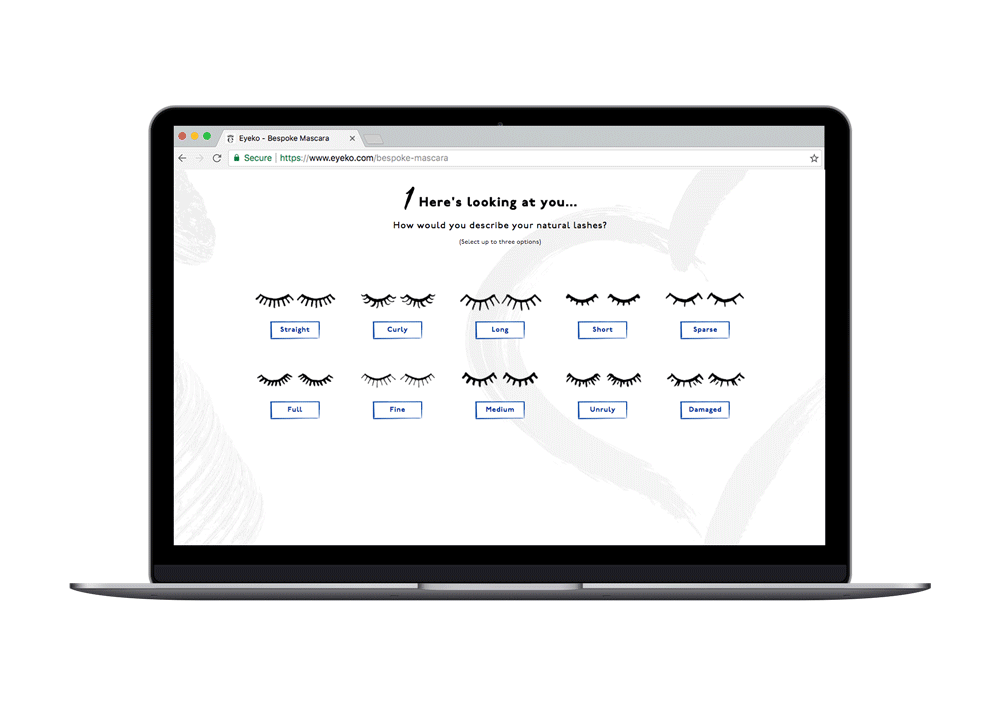
Onsite personalization that reacts to customer behavior and intent is another important way you can meet customer needs. With onsite marketing that anticipates customers’ thoughts based on elements like where the traffic originated from, how they interact with the content and at what point in the customer journey they might lose interest, brands can significantly increase conversion rates by giving visitors what they want.
Recapture attention with replenishment and recommendations
In an environment of almost infinite choice, consumers are more fickle than ever, and while beauty products are frequently bought, they’re also frequently switched. How can retailers learn from the subscription model to prevent them going to competitors?
While the majority of beauty boxes focus on the curation model, there’s another model that presents an opportunity – replenishment. Grooming subscription boxes like Dollar Shave Club or Cornerstone offer consumers simplicity and convenience, both attractive propositions to lock in loyalty. Amazon applies this to ecommerce by offering ‘subscribe and save’ on frequently replenished products, which is something beauty retailers could look to apply either onsite in exchange for a discount, or at a later date via an email remarketing campaign that anticipates when a customer might restock their beauty products.
In both cases, having the right data is key. Ella Tsang, Digital Specialist from Maybelline New York explains why data is so important to loyalty efforts:
“Once we really have the full picture of our consumer this gives us a lot of opportunity from a loyalty perspective, as we can work on things like following up via email, asking the consumer, “How was your purchasing experience?” Really trying to keep up that conversation with her after her purchase on our site.”
Recommendations are another way to add value, personalising the customer experience, as Ella reveals:
“Because we now know what a customer has actually purchased we can start thinking about how do we then continue to personalize her experience? Something such as another product that might be complementary, building her basket outside those things we already know that she likes. That’s the direction that we’re moving in. It’s really about having that knowledge of people who purchase online and being able to personalize their experience better.”
Conclusion
Beauty brands of all sizes move in a changing, disrupted environment, with Amazon at one end and agile subscription boxes and indie brands at the other. To compete, beauty brands should remember these key things:
- optimize every stage of the customer journey, from discovery through to purchase and loyalty, pinpointing the ‘moments of truth’ that will have the biggest impact on your customer experience and your business
- highlight USPs in order to make an impression on customers. While many retailers are competing for the same customers to sell the same products, the only way to differentiate is with onsite experience and a tailored user journey
- stay ahead of the personalization curve. As younger demographics increasingly prize authenticity, personalization and relatability, smart brands are using a combination of tech and marketing in order to collect data and capture repeat custom as effectively as possible – with customer experience at the heart of campaigns
Want more beauty ecommerce insights? Download our Beauty Ecommerce Lookbook!